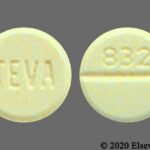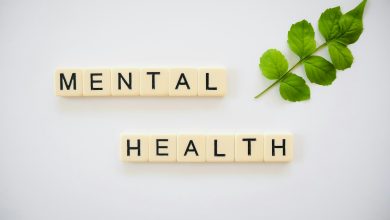What is Recreational Drug Use?

Recreational drug use can be defined as the use of a psychoactive drug to induce an altered state of consciousness either for pleasure or for some other casual purpose or pass time by modifying the perceptions, feelings, and emotions of the user. When a psychoactive drug enters the user’s body, it induces an intoxicating effect.
Generally, the term is often used to denote the use of illicit and other ‘dance drugs’, and implies that drug use has become part of someone’s lifestyle, even though they may only take drugs occasionally. Drug use can have a wide range of short- and long-term, direct and indirect effects.
These effects often depend on the specific drug or drugs used, how they are taken, how much is taken, the person’s health, and other factors. Short-term effects can range from changes in appetite, wakefulness, heart rate, blood pressure, and/or mood to heart attack, stroke, psychosis, overdose, and even death. These health effects may occur after just one use.
What types of recreational drug are there?
There are four main types of recreational drugs, divided according to their major effects, plus a few substances that do not easily fit into any category. The main categories are:
Stimulants: these are a group of drugs that result in increased activity in the body. Sometimes referred to as “uppers,” these drugs are frequently abused due to their performance-enhancing and euphoric effects. Generally, those who abuse stimulants experience heightened energy levels and enhanced focus.
Stimulants speed up mental and physical processes, which can produce desirable effects in the short-term by increasing levels of dopamine in the brain. While users may feel great due to the short-term effects of stimulants, long-term abuse of these drugs can have significant consequences, which is why it is so important for those who abuse the drugs to get help as quickly as possible.
There are both legal and illicit stimulants, and both categories are commonly abused. Some of the most commonly abused stimulants include cocaine, methamphetamine, and prescription stimulants, like Ritalin, Adderall and Concerta.
Depressants: these are drugs that inhibit the function of the central nervous system (CNS) and are among the most widely used drugs in the world. These drugs operate by affecting neurons in the CNS, which leads to symptoms such as drowsiness, relaxation, decreased inhibition, anesthesia, sleep, coma, and even death. Many depressants also have the potential to be addictive.
While CNS depressants all share an ability to reduce activity in the central nervous system and lower levels of awareness in the brain, there are significant differences among substances within this drug class. Some are safer than others and several are routinely prescribed for medicinal purposes.
An example of a depressant is alcohol. According to the American Psychiatric Association, approximately 50% of all assaults, homicides and highway deaths involve alcohol. One-third of all U.S. suicides involve alcohol.
Opium-related drugs: opioids are a class of drugs naturally found in the opium poppy plant and that work in the brain to produce a variety of effects, including the relief of pain with many of these drugs. Opioids can be prescription medications often referred to as painkillers, or they can be so-called street drugs, such as heroin.
Many prescription opioids are used to block pain signals between the brain and the body and are typically prescribed to treat moderate to severe pain. In addition to controlling pain, opioids can make some people feel relaxed, happy or “high,” and can be addictive. Additional side effects can include slowed breathing, constipation, nausea, confusion and drowsiness.
Opioids are sometimes referred to as narcotics and although they do relieve pain, they do not fall into the same category as over-the-counter painkillers such as aspirin and Tylenol.
The most commonly used opioids are: prescription opioids, such as OxyContin and Vicodin, fentanyl, a synthetic opioid 50–100 times more potent than morphine and heroin, an illegal drug.
Hallucinogens: belongs to a class of drugs that cause hallucinations—profound distortions in a person’s perceptions of reality. Hallucinogens can be found in some plants and mushrooms (or their extracts) or can be man-made, and they are commonly divided into two broad categories: classic hallucinogens (such as LSD) and dissociative drugs (such as PCP). When under the influence of either type of drug, people often report rapid, intense emotional swings and seeing images, hearing sounds, and feeling sensations that seem real but are not.
While the exact mechanisms by which hallucinogens and dissociative drugs cause their effects are not yet clearly understood, research suggests that they work at least partially by temporarily disrupting communication between neurotransmitter systems throughout the brain and spinal cord that regulate mood, sensory perception, sleep, hunger, body temperature, sexual behavior, and muscle control.
New psychoactive substances (illegal highs)
These are synthetic substances created to try to mimic the effects of existing drugs in the categories above, to get around the law. They used to be called ‘legal highs’ but all such substances are now illegal. Most have unknown effects in addition to their intended effect, and trying them is therefore extremely hazardous.
What are the factors that influence recreational drug use?
Regardless of your upbringing or moral code, many factors can raise your risk of becoming a recreational drug or alcohol user. Your genetics, environment, medical history, and age all play a role. Certain types of drugs, and methods of using them, are also more addictive than others.
Genetics. Addiction isn’t a matter of weak willpower or lack of morals. The chemical reactions that happen in your brain when you have an addiction are quite different than those that happen in someone without one. That explains why one person may be able to smoke cigarettes every so often for pleasure, while another needs them on a daily basis to function.
Heredity is a major risk factor for addiction. According to the National Institute on Drug Abuse, up to half of your risk of addiction to alcohol, nicotine, or other drugs is based on genetics. If you have family members who’ve experienced addiction, you’re more likely to experience it too.
If you have an “addictive personality,” you may be at risk of a wide range of addictions. For example, if you have an alcoholic parent, you might choose not to drink but still become addicted to smoking or gambling.
Environment. Environmental factors can also raise your risk of becoming a recreational drug user. For children and teens, lack of parental involvement can lead to greater risk-taking or experimentation with alcohol and other drugs. Young people who experience abuse or neglect from parents may also use drugs or alcohol to cope with their emotions. Peer pressure is another risk factor for addiction, especially among young people.
Even when it’s not overt or aggressive, pressure from friends to fit in can create an environment of “experimentation” with substances that can lead to addiction. The availability of a substance in your social group can also affect your risk of becoming addicted.
Dual diagnoses. In the medical community, you have a “dual diagnosis” if you have both an addictive disorder and another mental health condition, such as depression. Underlying mental health issues can increase your risk of addiction. In turn, an addiction can increase the severity of other mental health conditions. This creates a vicious cycle in which your addiction tends to progress quickly and with severe consequences. You may feel like alcohol or drugs decrease your depression symptoms for a short period of time. But in the long run, addiction will likely make things worse.
Early use. Another risk factor for addiction is the age at which you begin the behavior. A survey conducted by the National Institute on Alcohol Abuse and Alcoholism found that young adults between the age of 18 and 24 were most likely to have both alcohol use disorders and other drug addictions. Addictive behavior when you’re young can also impact your brain development, making you more prone to mental health disorders as you get older and your addiction progresses.
Drug of choice. While some addictions progress slowly over the course of several months or years, others move more quickly. The object of your addiction can play a role. Drugs such as cocaine, heroin, and methamphetamines tend to be more physically addictive than alcohol or marijuana. If you use cocaine or heroin, the withdrawal or “comedown” phase tends to be physically painful. This may push you to use them more often and in higher doses to prevent the withdrawal symptoms. This can speed up the process of addiction and raise your risk of serious complications, including overdose.
Method of use. Just as certain drugs may be more addictive than others, your method of using drugs can also increase your risk of addiction. Drugs that are smoked or injected into your body tend to be more addictive than those that you swallow. When you smoke or inject drugs, they go straight into your bloodstream and brain, rather than passing through your liver and other organs where they’re filtered first.
What are the most commonly used recreational drugs?
According to the National Institute on Drug Abuse many drugs can alter a person’s thinking and judgment, and can lead to health risks, including addiction, drugged driving, infectious disease, and adverse effects on pregnancy. The most commonly used drugs with the potential for misuse or addiction are:
Alcohol: alcohol tops the charts among intoxicating substances used by Americans. An overwhelming 86% of adults in the US report drinking alcohol in their lifetime. More worrisome, however, is the fact that 26% of adults report binge drinking within the past month. Binge drinking and heavy alcohol use are risk factors for addiction. An estimated 14.4 million Americans are battling alcohol use disorder, yet less than 8% have received addiction treatment in the past year.
Tobacco: tobacco is the leading cause of preventable death, disability, and disease in the United States. An estimated 40 million American adults smoke cigarettes. Every day, roughly 1,600 adolescents under the age of 18 smoke their first cigarette. Smoking or exposure to second-hand smoke claims half a million American lives each year. The economic burden of smoking-related diseases is to the tune of $170 billion each year. Yet, the tobacco industry continues to promote and market tobacco products.
The effects of smoking are evident in nearly every organ system in the human body. In addition to cancer, smoking causes lung diseases and irreversible lung damage. Smoking also significantly increases the risk of stroke, heart attack, aneurysms, and vascular disease. Smoking is a risk factor for coronary artery disease, which is the leading cause of death in the United States.
Marijuana: marijuana (cannabis, weed, pot) is the most commonly used illegal recreational drug in the US. Approximately 45% of American adults report using marijuana in their lifetime. Its use is particularly widespread among adolescents and young adults. More than 35% of 12th graders reported past-year use of weed on a nationwide survey.
Many of the 37 million marijuana users in the US are not aware of the wide range of health effects it can have on the brain and body. Besides the fact that marijuana is addictive, it has direct effects on the brain and can lead to problems with memory, learning, attention, and brain development.
Cocaine: nearly 15% of American adults report using cocaine in their lifetime. Roughly 40% of drug-related emergency department visits involve cocaine. Cocaine claims about 5,000 American lives each year.
Crack/cocaine is a highly-addictive stimulant drug that people abuse for its euphoric effects. The drug increases the levels of dopamine in the brain, a natural chemical that regulates feelings of pleasure. However, repeated use of cocaine can have a range of health effects, including disturbances in heart rhythm, heart attack, seizures, strokes, and coma. Even the first use of cocaine can lead to sudden death as a result of cardiac arrest or seizures.
Heroin: nearly 950,000 Americans report heroin use in the past year, a number that has been rising over the past decade and a half. This trend is driven largely by young adults in the 18-25 age group. Roughly 170,000 people use heroin for the first time each year. The effects of heroin use can be felt across the United States from coast to coast. Heroin affects communities nationwide and is no longer predominantly abused in urban areas.
Heroin belongs to a class of drugs called opioids. Besides addiction, the long-term effects of heroin abuse include damage to the lungs, heart, brain, and liver. Mixing heroin with other drugs, including prescription medications, can have unpredictable and dangerous effects, such as slowing or cessation of breathing, overdose, and death. Overdose deaths involving opioids (including prescription opioids, synthetic opioids, and heroin) have increased six-fold since 1999 and claimed 47,000 American lives in 2018.
Hallucinogens: approximately 15% of Americans have used hallucinogenic drugs like LSD and Ecstasy. These powerful mind-altering drugs cause sensations and images that seem real but are not. Hallucinogens produce potent effects on the human brain by interfering with chemicals that regulate mood, sleep, hunger, muscle control, body temperature, sensations, and sexual behavior.
Methamphetamine: the lifetime prevalence of methamphetamine (crystal meth) use in the United States is just over 5%. Methamphetamine is a powerful, highly addictive stimulant drug that has severe effects on the human nervous system. Short- and long-term health effects of methamphetamine include increased wakefulness, decreased appetite, fast breathing, irregular heart rate, increased blood pressure, and increased body temperature. People who abuse meth are at an increased risk of contracting infections like HIV and hepatitis.
Prescription Drugs: every day, nearly 5,500 Americans misuse prescription pain relievers for the first time. An estimated 2 million Americans misuse prescription pain pills, 1.5 million misuse tranquilizers, and about 275,000 misuse sedatives for the first time each year. Young adults in the age group of 18-25 are the most affected by the non-medical use of prescription drugs. Recreational use of prescription drugs claims thousands of lives each year in the United States. Opioids are currently responsible for the majority (nearly 70%) of drug overdose deaths.





